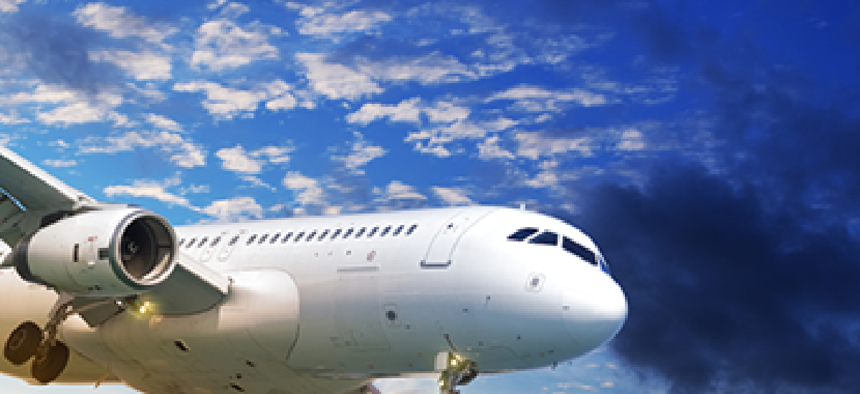A better way to get bottles through security

Los Alamos develops screening technology to identify dangerous liquids.

Scientists at Los Alamos National Laboratory have combined X-ray and imaging technology into what they hope will be a more effective, economical technology package that can be used to scan containerized liquids carried by passengers though airport security checkpoints.
A low-power X-ray scanner coupled with magnetic resonance imaging (MRI) technology, they said, could be a breakthrough for quickly and efficiently screening liquids at terminal checkpoints to see if they present a threat. The inability to effectively scan liquids has been problematic for security screeners. Dubbed MagRay by its developers, the system was funded by the Department of Homeland Security’s Science and Technology Directorate.
In a lab statement, MagRay engineer Larry Schultz said the technology's goal is to quickly and accurately distinguish between liquids that appear identical to the naked eye. What appears to be a bottle of white wine could potentially be nitromethane, a liquid that could be used to make an explosive, explained the lab. Both are clear liquids, but one would be relatively safe on a commercial aircraft, while the other would be strictly prohibited. Schultz, MagRay project leader Michelle Espy and a team of scientists at Los Alamos searched for a way for airport security personnel to tell the difference between a potentially dangerous liquid and a harmless one quickly, accurately and cost-effectively.
“One of the challenges for the screening of liquids in an airport is that, while traditional X-ray based baggage scanners provide high throughput with good resolution of some threats, there is limited sensitivity and selectivity for liquid discrimination,” said Espy. “While MRI can differentiate liquids, there are a certain class of explosives, those that are complex, homemade, or may have mixes of all kinds of stuff that are more challenging.”
In a video posted on YouTube, Espy and the MagRay team explained the new technology was developed with a simple operator interface that offers a "green light" or "red light" scan result without complicated data that would take time to sort through. Additionally, said James Hunter, a Los Alamos X-ray testing engineer working on the project, a scanner combining the two technologies wouldn't be very large and might be made with off-the-shelf components. "Normally a terminal system takes a lot of work and a lot of things don't work right," he said. The MagRay system, he said, isn't one of those.
“I am amazed at how good it works,” said Espy. “We’ve been able to look at a really broad class of explosives, we’ve been able to look through all kinds of packaging, and we’ve unlocked a new parameter – proton content – that’s not available to either X-ray or MRI alone.”
“We’re looking for where a liquid lies in a sort of three-dimensional space of MRI, proton content, and X-ray density,” said Schultz. “With those measures we find that benign liquids and threat liquids separate real nicely in this space, so we can detect them quickly with a very high level of confidence.”
In the lab's video, Espy said the detection technology is in the "proof of concept" stage. "The hope is that we'll be able to more seamlessly integrate the X-ray detector and the X-ray source into the existing footprint of the bottle screener and keep the device small and inexpensive."





